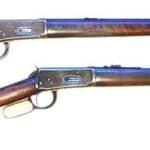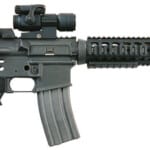
The Low-Wall Rifle: A Detailed Look at a Classic Firearm
Since its inception, the Low-Wall rifle has held a special place in the hearts of firearm enthusiasts around the world. This classic firearm, originally produced by the famed Winchester Repeating Arms Company, is an icon of American history, reflecting a time when craftsmanship and precision were the defining aspects of gun manufacturing. This article will delve into the background, design, and uses of the Low-Wall rifle, revealing what makes this gun a perennial favorite among collectors and shooters alike.
History and Background
The Low-Wall rifle, often referred to as the "Winchester Model 1885 Low Wall," is one of two configurations of the Model 1885 rifle, with the other being the High-Wall version. Both rifles were developed by John Browning, a legendary figure in firearm design, and first produced by Winchester in 1885.
The Model 1885 Low-Wall rifles were created during the height of the single-shot rifle era in America, a period when these firearms were prevalent in hunting, target shooting, and even military use. Browning, in his genius, designed a single-shot rifle that was simple, robust, and highly accurate, traits that quickly made the Model 1885 a standout choice. Although the Winchester Model 1885 Low Wall and High Wall are essentially identical in functionality, their physical attributes differ, giving the Low Wall its unique appeal.
Design and Features
As its name suggests, the Low-Wall rifle is characterized by its "low wall" receiver design. In contrast to the High Wall, where the receiver sides rise to the level of the breech block when it's closed, the Low Wall's sides are lower, leaving a significant portion of the breech block and the base of the cartridge exposed when the action is closed. This design, while providing less reinforcement, contributes to a lighter overall weight, a feature often preferred by hunters and sport shooters who appreciate a nimble, easy-to-handle firearm.
The Low Wall employs a single-shot falling-block action, a mechanism known for its strength, simplicity, and reliability. The hammer, when cocked, provides an extra layer of safety by blocking the firing pin until the trigger is pulled. The low-wall design, while not providing as much strength as the high-wall variant, is more than sufficient for lower-pressure rounds typically associated with small game hunting or sport shooting.
Despite being primarily designed for smaller calibers, the Low Wall has seen production in a wide range of calibers over the years, from .22 rimfire cartridges up to mid-range centerfire cartridges. The balance of the rifle, combined with the low recoil of these calibers, offers an enjoyable shooting experience, making it popular for plinking, small game hunting, and informal target shooting.
Legacy and Uses Today
While the era of single-shot rifles has been largely superseded by repeating and semi-automatic designs, the Winchester Model 1885 Low Wall continues to hold a special place in the realm of firearms. Its design and function hearken back to a time when skill and precision were paramount, reflecting a bygone era of American firearm craftsmanship.
In today's world, the Low Wall continues to be popular for various shooting disciplines. It's often chosen by hunters pursuing small to medium-sized game, given its excellent balance, light weight, and the wide variety of calibers available. For target shooting, its robust, simple mechanism, coupled with the inherent accuracy of single-shot rifles, makes it a preferred choice.
Collectors also covet the Low Wall for its historical significance and the testament it provides to John Browning's genius. Original Winchester-produced Low Walls, especially those in good condition or with unique features, are often highly valued on the collector
Discussion forums on this and other Winchester firearms can be found here.
If you know of any forums or sites that should be referenced on this listing, please let us know here.




